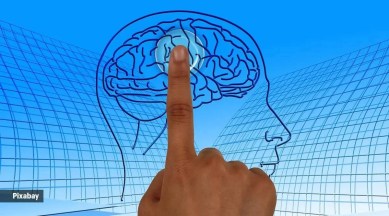📣 For more lifestyle news, click here to join our WhatsApp Channel and also follow us on Instagram
Chronic traumatic encephalopathy diagnosed in woman athlete for the first time; know more about the brain disease
Use of protective headgear such as helmets and mouth guards can reduce the risk of direct head trauma, said Dr (Prof.) Suryanarayana Sharma P M, senior consultant neurologist and stroke specialist, Apollo Hospitals, Bannerghatta Road, Bangalore

The world’s first diagnosis of chronic traumatic encephalopathy (CTE) in a deceased woman athlete has come to light. A study on Heather Anderson’s brain, an Australian rules footballer who took her own life last year aged 28, indicates a degenerative brain disease, linked to contact sports, reported BBC. Notably, such studies are usually carried out on male athletes.
According to the BBC report, scientists say the case could be “the tip of the iceberg” for women in sports.
monthly limit of free stories.
with an Express account.
Anderson’s family reportedly donated her brain for the study to the Australian Sports Brain Bank.
According to the study’s co-author Prof Michael Buckland, Anderson’s brain had three clear lesions involving problem-solving, language, and memory.
What is the condition all about?
Chronic traumatic encephalopathy is a serious brain condition that occurs because of repeated head injuries, often in people involved in contact sports or those who experience multiple concussions, said Dr Bhakti Gajjar, neuro-physician, HCG Hospitals, Ahmedabad.
“The symptoms can vary, but they commonly include memory loss, confusion, mood changes, and difficulties with thinking,” said Dr Gajjar.
Most of the cases in the olden days were reported in athletes involved in combat sports such as boxing, kickboxing, and martial arts. It was named dementia pugilistica. Nowadays it is commonly seen in athletes involved with contact sports such as football, professional wrestling, rugby, and military exercises, said Dr (Prof) Suryanarayana Sharma P M, senior consultant neurologist and stroke specialist, Apollo Hospitals, Bannerghatta Road, Bangalore.
Elaborating that there are four stages spread over 8 to 10 years after a patient experiences repetitive head injuries, Dr Sharma said.
The first-stage symptoms are dizziness, headache episodes of confusion, and disorientation.
Second-stage symptoms include memory loss, social instability, impulsive behaviour, and poor judgment.
Third-and final-stage symptoms include progressive dementia, Parkinson’s-like clinical features, speech difficulty, depression, and suicidal behaviour.
“However, definitive diagnosis can be done by autopsy, only after death. Brain biopsy in patients with CTE may show significant loss of brain tissue, atrophy of frontal and temporal cortex, hippocampus, entorhinal cortex and amygdala,” said Dr Sharma.
There is no definitive cure for this disease. “Prevention is the key. Use of protective headgear such as helmets and mouthguards can reduce the risk of direct head trauma,” said Dr Sharma, adding that more research was needed to develop ultra-thin protective headgear for footballers and boxers to reduce the risk off repetitive brain injury while preserving the interest of the game.
Dr Gajjar said that preventing CTE requires a comprehensive approach. “It starts with educating individuals about the risks associated with head injuries and promoting the use of proper protective gear. Strict safety protocols and rules in sports can go a long way in reducing the frequency and severity of head traumas,” said Dr Gajjar.
It is crucial to promptly identify and manage concussions by providing adequate rest and seeking medical attention. “Early diagnosis and treatment of CTE-like symptoms are also important, as they allow patients to access the support, therapy, and interventions needed to alleviate some of the distressing effects,” he said.
📣 For more lifestyle news, follow us on Instagram | Twitter | Facebook and don’t miss out on the latest updates!
📣 For more lifestyle news, click here to join our WhatsApp Channel and also follow us on Instagram